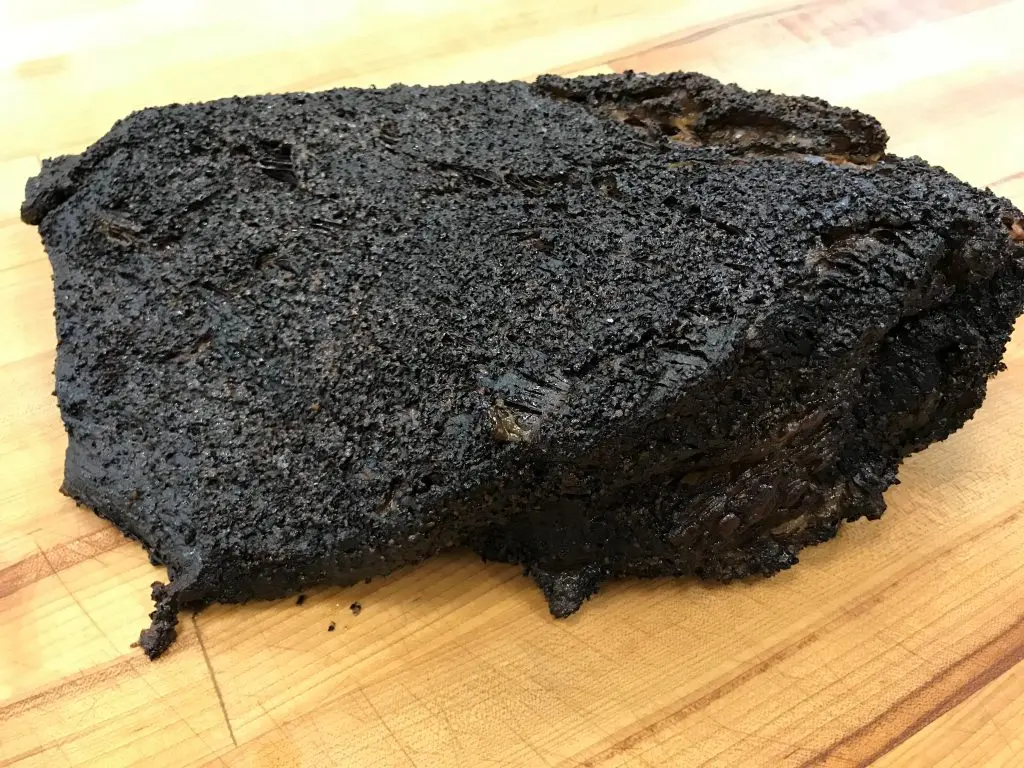Barbecue is a long-standing tradition in Texas, and one of the most esteemed dishes is smoked brisket. Brisket, a tough cut of meat, is transformed into tender and flavorful perfection through the art of low and slow smoking. Achieving the ideal pull temperature for brisket is crucial to ensure melt-in-your-mouth deliciousness. In this article, we will explore the optimal temperatures and techniques for smoking brisket to perfection.
Trim the Fat for Better Flavor Penetration
One important step in preparing a good brisket is trimming the fat. It is recommended to trim the fat until it is about 1/4" thick. Contrary to popular belief, a large fat cap does not add flavor to the brisket. In fact, it hinders the absorption of salt and other seasonings, which affects the flavor development. By having a thinner fat cap, the salt and pepper seasoning can penetrate the meat better, resulting in a more flavorful brisket.
Keep it Simple with Salt and Pepper
True Texas brisket requires only three things: salt, pepper, and smoke. Avoid using additional spices, herbs, or sauce. Let the meat and the smoke speak for themselves. The combination of salt and pepper creates a dark, blackish crust that adds a delicious crunch to the brisket. Cooking the meat at high temperatures can cause the muscle fibers to contract and force out the juices, resulting in a dry brisket. Therefore, it is recommended to smoke the brisket at temperatures between 225°F and 275°F to achieve the Maillard Reaction and enhance the flavor of the bark.
The Brisket Stall: Patience is Key
During the smoking process, you may encounter a phenomenon known as the stall. The brisket temperature will rise steadily for the first few hours and then suddenly plateau around 150°F to 160°F. This stall occurs because the meat begins to sweat, which naturally cools the surface of the brisket. It is important to maintain a consistent temperature and power through the stall. Some pitmasters use the texas crutch method, which involves wrapping the brisket in butcher paper or foil to shorten the stall. However, this method can affect the crust development and flavor profile of the brisket.
Choosing the Right Wood for Perfect Smoke
The type of wood used for smoking can greatly impact the flavor of the brisket. Not all woods are created equal. Some woods, like Maple and Alder, offer a subtle sweetness, while others, like Oak and Pecan, provide an earthy flavor. Bolder woods, such as Hickory and Mesquite, add a stronger smoky taste. For Texas brisket, it is recommended to use earthy woods like Oak and Pecan to achieve the desired flavor profile. Experimentation with different wood blends can also help create a customized flavor profile.
The Myth of the Smoke Ring
Many people associate the smoke ring with properly cooked barbecue, including brisket. However, the smoke ring does not affect the flavor of the meat. It is simply a visual indication of the interaction between myoglobin (pink protein) and gases produced by burning wood. The smoke ring can also be achieved by using curing salt, which contains nitrites and nitrates. To determine if a brisket is done, look for the brisket wobble - a visual cue that indicates the conversion of connective tissue into gelatin.
The Importance of Resting and Slicing
After smoking, it is crucial to let the brisket rest to allow the moisture to redistribute evenly throughout the meat. This further enhances the tenderness. Resting can be done in a hot holding cabinet or by wrapping the brisket and placing it in a well-insulated cooler. When it comes to slicing, it is essential to cut against the grain. This creates shorter muscle strands, resulting in a more tender mouthfeel. Brisket has two muscle structures with different grain directions, so it is important to identify and slice against the grain of each section.
Should brisket be pulled at 200 or 205 degrees?
The ideal internal temperature for perfectly tender brisket is between 205°F and 210°F. Beyond this temperature, the brisket may start to dry out. It is important to note that this temperature range may vary depending on the specific cut of brisket and personal preference. It is recommended to use a reliable meat thermometer to monitor the internal temperature and ensure optimal results.
At what temperature does brisket fall apart?
Brisket typically reaches its fall apart stage when it reaches an internal temperature of around 195°F to 205°F. At this temperature, the connective tissues have converted into gelatin, resulting in a tender and easily shreddable texture. However, it is essential to consider factors such as the quality of the meat, cooking method, and personal preference when determining the ideal temperature for achieving the desired texture.
In conclusion, achieving the perfect pull temperature for smoked brisket requires attention to detail and adherence to certain techniques. By trimming the fat, using salt and pepper only, maintaining low and slow cooking temperatures, choosing the right wood for smoke, and resting the brisket before slicing, you can ensure a tender and flavorful result. Remember to slice against the grain for the best texture. Experimentation and practice will help you master the art of smoking brisket to perfection.
If you want to know other articles similar to Perfectly tender smoked brisket: achieving the ideal pull temp you can visit the Smoking category.


Related Articles